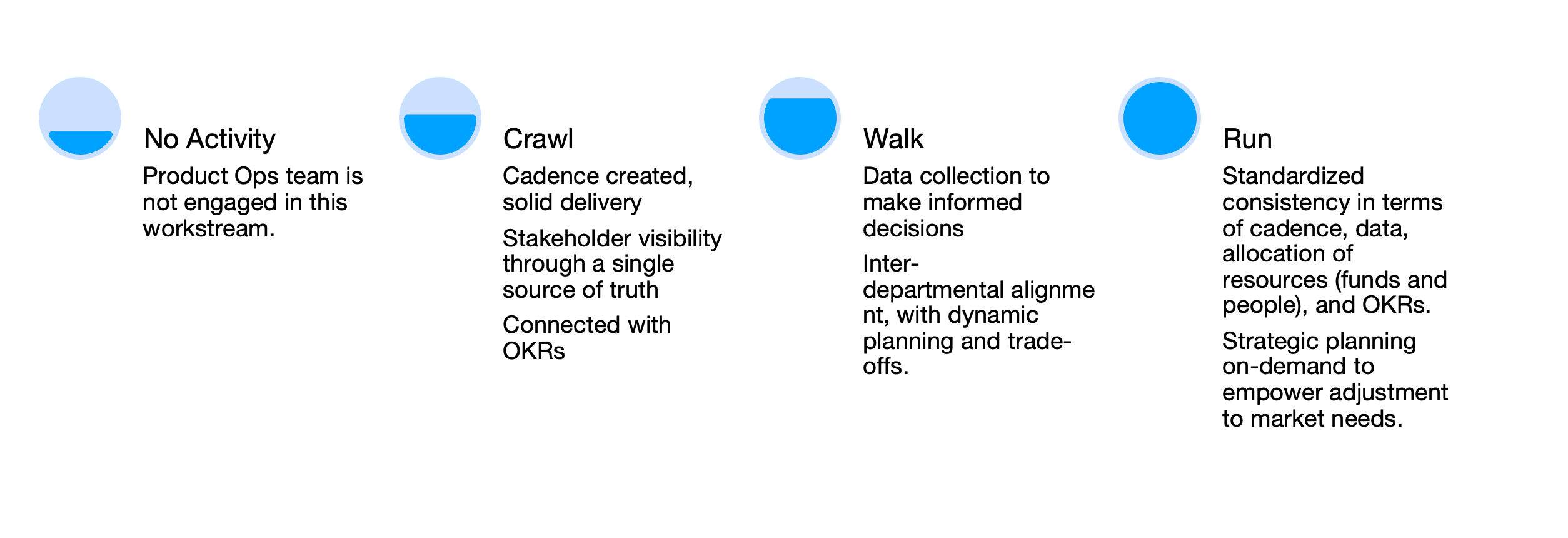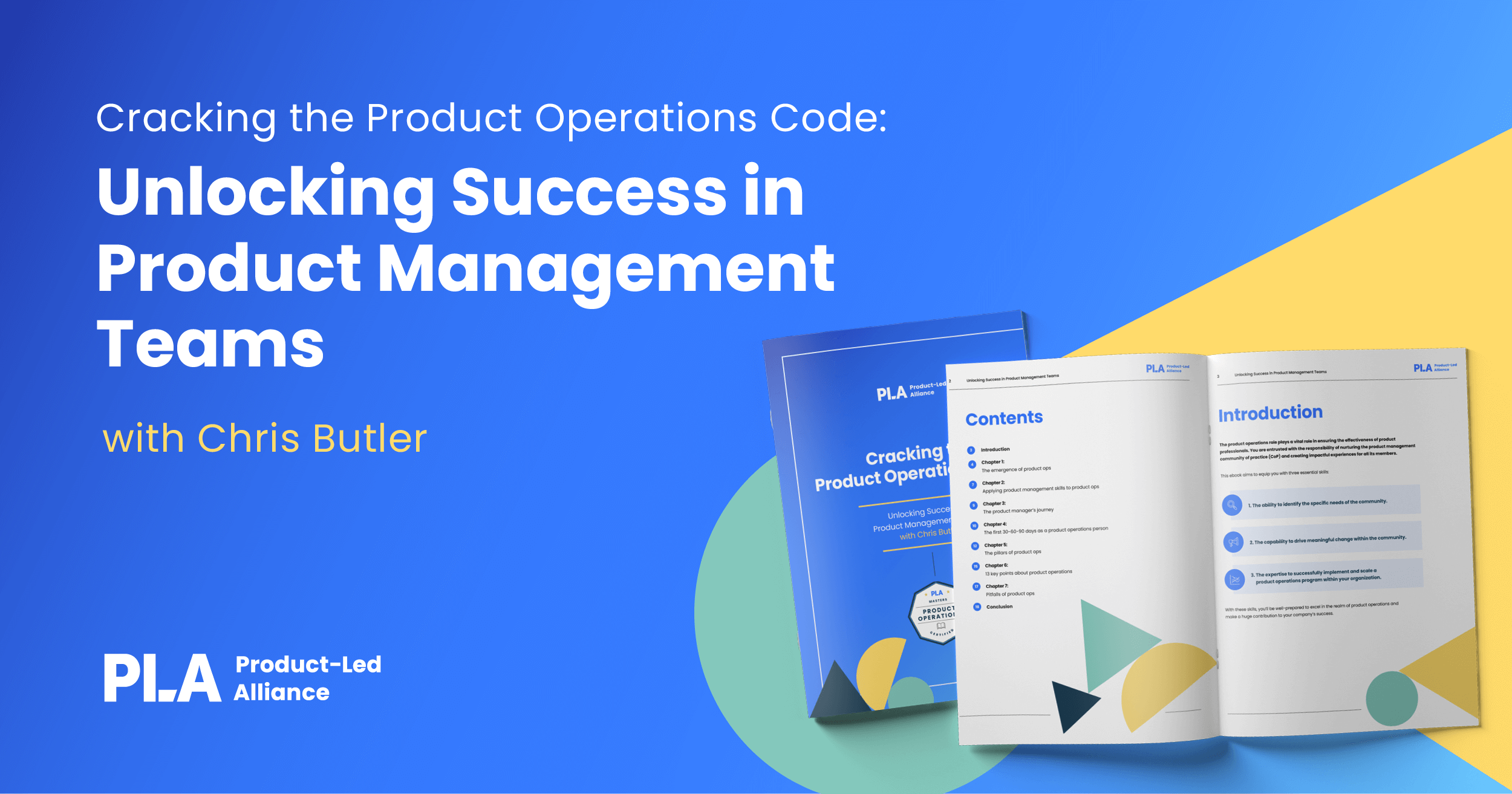Consider this case study… somewhere within the tech and telecom space, there was a product operations (product ops) team that was self-described as small, but mighty. They were focused on a few areas within the scope of product ops, like the New Product Introduction and management of Objectives and Key Results (OKRs). Team members were proud of their work, and it was going well.
But then, along came a set of new (and common) problems. The product organization was growing fast. Mostly working remotely, they were impacted by the Great Resignation, which was creating turnover rates they had never seen before. They were trying to scale in new ways, but it was hard. They needed help.
Luckily, the product ops team was there to assist! They had the skills to fix all sorts of business fires including new employee onboarding and capacity planning. This new challenge presented a silver lining for the product ops team and it led them down the path of maturity.
Three-step maturity process
Maturing a product ops team takes time, and the transition can be slow, but it’s worth it. Creating a consistent, reflective process will:

Let’s look at how to mature your product ops team through these three recurring steps.
Step 1: Conduct an annual maturity assessment against industry standards
This step is the easiest because Product ops work streams have already been documented by the industry. All you have to do is leverage them. There are several handbooks that explain the wide variety of tasks done by product ops teams.
For example, the Product Led Alliance has the State of Product Ops. Use a handbook like this to conduct your maturity evaluation against industry standards, allowing the team to assess growth and performance year-over-year.
Maturity stages defined
For each business area or work stream within product ops, evaluate your team’s performance as No Activity, Crawl, Walk, or Run. These definitions were adapted from the DragonBoat Product Ops Playbook.

Maturity evaluation and presentation creation
The annual maturity assessment will look something like the table below. The maturity evaluation can be turned into a presentation summarizing your team’s progress.
- Share the deck with your leadership team and team leads.
- Ask if you can attend team meetings to promote the vision.
- Talk about which work streams are priority for the upcoming year.
- Emphasize that product ops does not have to grow or change all at once. Instead, the team can use minimum viable process improvement to reduce impact on the business.
Product ops maturity is not a linear path. A team cannot juggle all balls in the air at the same time. Here are a few tips when deciding where to focus.
- A mix of work streams is healthy. Over-indexing in one area, or being spread too thin, is not good.
- A combination of maturity stages is healthy because you have to prioritize your resources and focus on what’s best for the Product organization.
- Be careful not to create a bureaucracy. Leaders should be empowered, not tied to strict processes.

Step 2: Collect data to build trust
Collect data to prove that your team is effective. Quality is the priority. You want to show that product ops is bringing value to the larger organization. Once you have established effectiveness, focus your data on speed or efficiencies. If you can prove that your team is both effective and efficient, then your team is progressing along the maturity path.
After you’ve gathered your data, send a monthly email. Brag about what went well, acknowledge what didn’t go well, and propose improvements for next time.
Examples of qualitative and quantitative data creation and management include:
- Survey the audience after a Quarterly Business Review.
- Ask for feedback on what went well and what could have gone better after an agile planning increment.
- Gather and analyze product usage data.
Step 2 takes time, but it’s always worth it!
Step 3: Ensure operational tasks are staffed
From a risk management perspective, the scenario to avoid is one in which no one owns the workstream. The lack of ownership creates a hole that disrupts other business functions. Risk mitigation strategies to avoid this scenario include:
Option 1: Staff within the product organization
The key takeaway is that the product ops team does not have to do the work themselves. Rather, the product ops lead must ensure that another team, within the product organization owns each work stream. You can delegate product ops functions outside of the product team, but I don’t advise this approach, as the task may be deprioritized.
Option 2: Staff within product ops team
If you think the effort should reside within the product ops team, and you need an additional headcount, take these steps.
- Create or update the product ops career ladder and job descriptions. Ensure the job descriptions allow the candidate to grow as the team takes on a broader scope.
- Request a new role while finance is building next year’s budget. Timing is everything.
- Think bigger. Can you outsource to a project-based consultant or hire overseas?
- Build a business case for the role. Use the data collected in Step 2 to show how much more could be done with the additional resources.
Conclusion
Building a product ops team can be rewarding. Each year, start with the maturity evaluation and work your way through the three-step process.
Following this annual reflective process will increase the quality of performance and focus your team on the highest priorities.




 Follow us on LinkedIn
Follow us on LinkedIn




